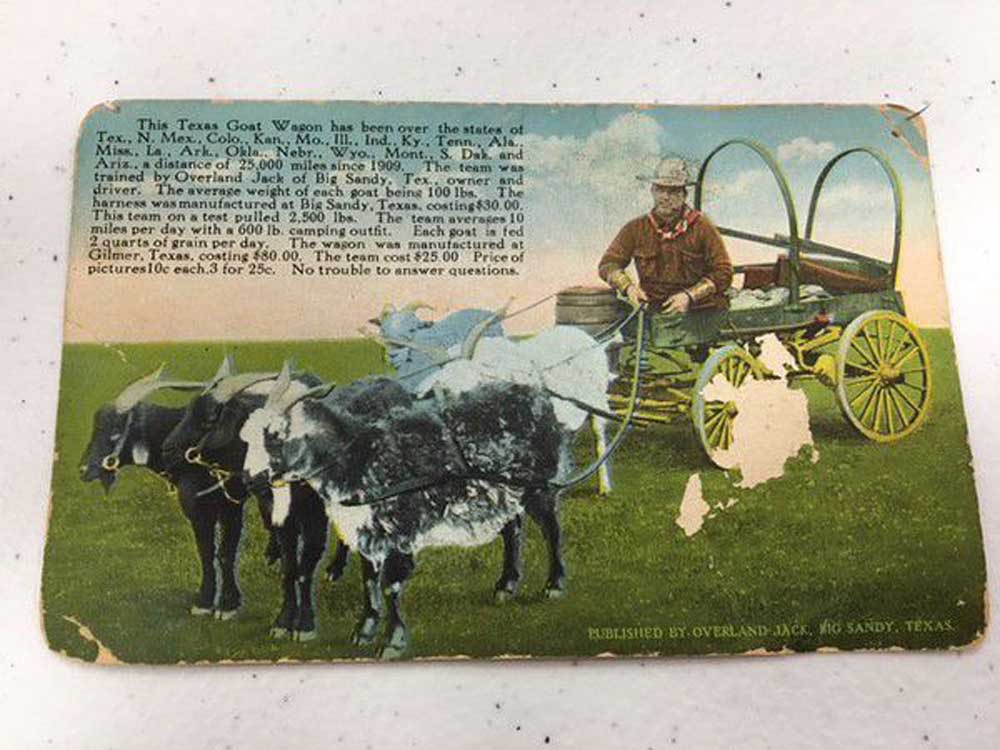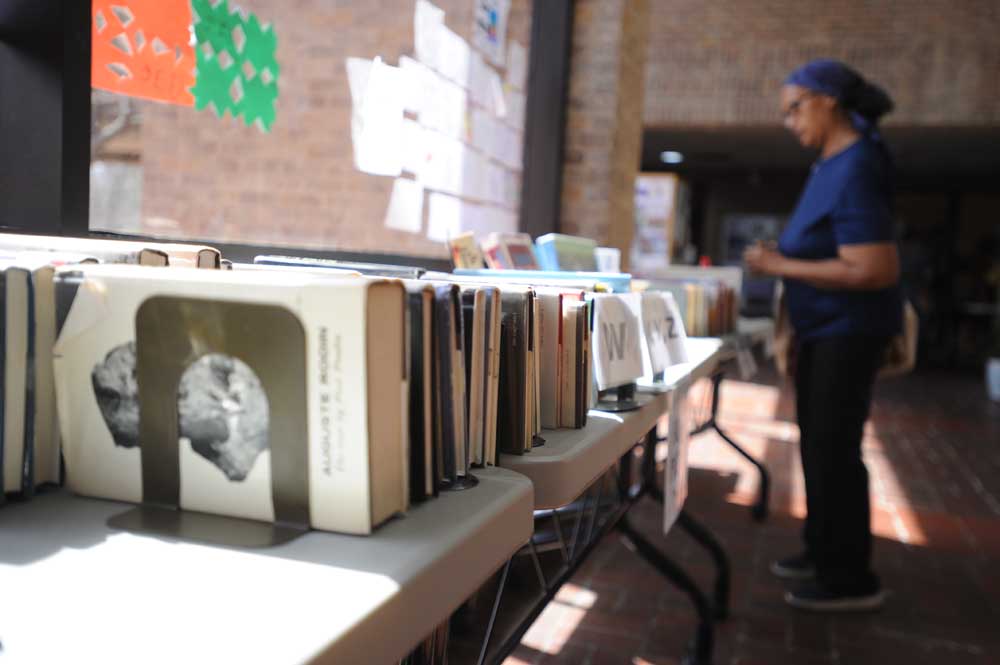Big Sandy’s “Goat Man” lives on in hearts, minds
Published 10:33 pm Sunday, March 13, 2016

- Photo by Jacque Kilburn-Simmons - This is one of the original Goat Man post cards that cost a dime.
BIG SANDY – A beloved figure known around Big Sandy as “The Goat Man,” may be gone, but his legacy as a fiercely independent, creative entrepreneur lives on.
The late John Rose, also referred to as Overland Jack, seemed to have a wandering spirit that helped him rise above early misfortune.
He had no legs, but traveled state to state by goat, mostly repairing watches and sharpening tools, securing his reputation throughout East Texas as a sort of “jack of all trades.”
Rose died in 1962 at 73. Decades later, however, people in Big Sandy are still proud the talented traveler, who knew his way around a set of tools, picked their town to set down roots.
“Everybody knew him,” said longtime resident and retired school superintendent Charles Penney. “If you were in the community, you knew him as ‘The Goat Man.'”
Much of his mystique centers on his colorful persona.
It seems Rose was gravely injured as a boy, after falling under a freight train.
“He lost his legs at 9, and his mother and dad threw him out at 11 with only a two-wheeled cart and a goat. They just didn’t want him anymore … he was on his own,” said friend Addie Mae Brown, whose family helped care for him at the end of his life.
The accident may have claimed his limbs, but not his desire to be a bright spot to those around him.
“He enjoyed life, enjoyed people and laughed and made people happy,” Ms. Brown said. “He was a good man … everybody loved him. Big Sandy wouldn’t be Big Sandy without a goat man.”
Rose relied on a small set of crutches for mobility.
A small wagon headed by an accumulated team of goats was his preferred method of transportation. The little group traveled extensively, with only the stars and instincts to guide them.
Rose’s travels started in 1909, shortly after graduating high school in Delphi, Indiana, according to local historian Shirley West’s book, Big Sandy: Big Helper of Men.
“He toured 19 states and traveled 30,000 miles before he settled in Big Sandy,” Ms. West wrote. “He repaired watches, guns and antique clocks and was totally independent.”
As a side venture, the entrepreneur sold 10-cent souvenir picture postcards, featuring him and his goats.
Cards also included bits of trivia, such as states he visited and the habits of his four-legged travel companions. An excerpt reads: “This team on a test pulled 2500 lbs. The team averages 10 miles a day with a 600 lb. camping outfit. Each goat is fed 2 quarts of grain per day. The wagon was manufactured at Gilmer, Texas, costing $80. The team cost $25. Price of pictures 10 cents each, 3 for 25 cents. No trouble to answer questions.”
Big Sandy’s unofficial ambassador was apparently a man of few possessions.
His home base was a tiny lakeside shack on the edge of town, allowing him to soak up the simple pleasures of a quiet, country life: wind in the pines, a moon’s reflection on the water, nighttime choruses of bullfrogs.
“He didn’t have a lot of things, but he had a nice rifle,” Penney said. “He also had two .45 pistols with carved handles that he did himself.”
The humble man who became a local legend lived life on his terms, right up until the end.
With no known surviving relatives, locals pitched in when his health faltered.
At the time of his death, the late Cyril Bennett, who was justice of the peace at the time, helped with disbursement of assets, locals said.
Caldwell Zoo was gifted with his goats and wagon.
Ms. Brown’s mother made certain the Goat Man received a proper burial.
He was laid to rest at Chilton Cemetery, honored with a carefully inscribed tombstone that reads: “John Rose, known as Overland Jack, Nov. 19, 1888 to Oct. 13, 1962, He lives in Christ.”
The stone also includes a character drawing of one his goat pals and his pistol, as well as a black and white photo of the man, himself.
“He was a wonderful, wonderful old man,” Ms. Brown said. “He taught us you could do anything you wanted to do. He’s a legend … I still have his Bible, and his felt hat is hanging on my hall tree.”
Retired lawman and artisan Richard Lingle did a pencil drawing of the original postcard in the 1980s, in hopes of keeping the Rose’s image in the public consciousness.
Original cards are few and far between these days, he said.
“I just think we do not need to lose history,” Lingle said. “I’ve always loved items from the past, and I wanted to save them for the future.”
Some of Rose’s tools and personal effects are among the items set to go on display in a new Big Sandy museum that’s in the works.
A small section is earmarked for The Goat Man, featuring photos and some of his personal effects, said local resident Ellis Stewart, who is helping facilitate the project.
“We had hoped to open this month, but it’s just not ready,” he said. “We’re still going through things and trying to get set up. He’s (Goat Man) definitely going to be in it … our museum wouldn’t be complete without him.”
TWITTER @ TMT _ Jacque






